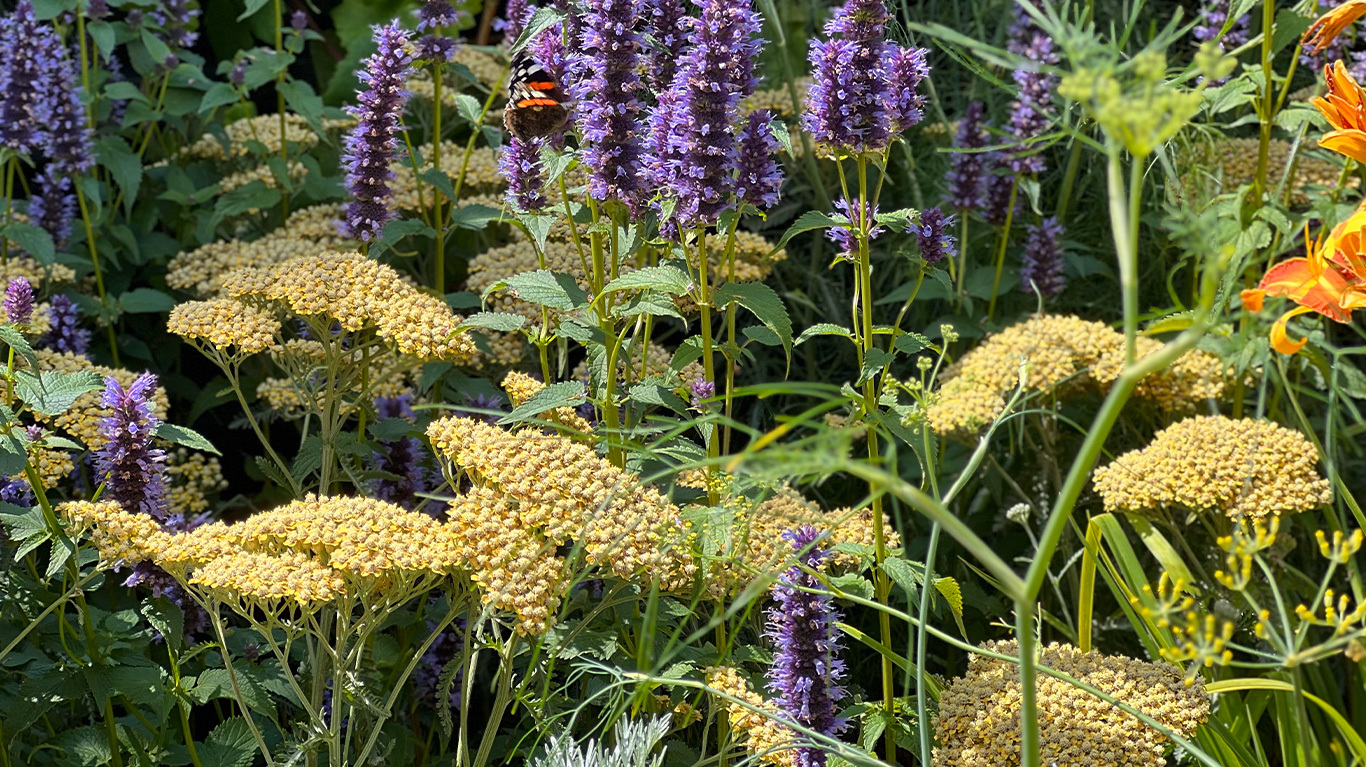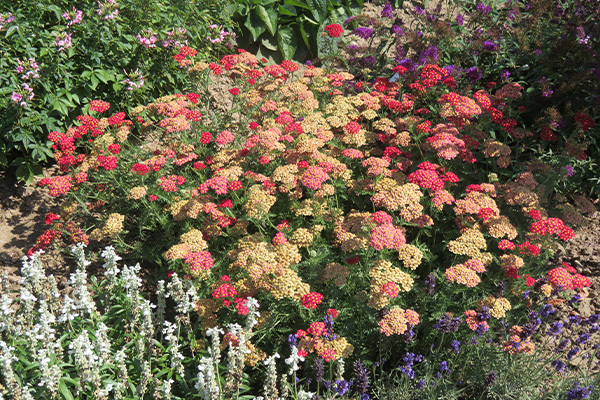How to Plant & Grow
Achillea
Also known as Yarrow, Achillea plants are a drought-tolerant option for your summer garden. Their low-maintenance abilities and attractive appearance make for a perfect addition to your next display.
Here’s how to grow and care for your next Achillea plant like a pro.

What We've Included
When to Plant | How to Plant | Where to Plant | When to Water | Deadheading | Propagating | Common Issues | Achillea FAQs | Inspiration
When to Plant Achillea
Achillea is best planted outdoors in spring or autumn, ideally from March to late June/early July or October to November. This gives the plant plenty of time to establish a root system, ready for the next flowering season.
How to Plant Achillea
Planting Pot-Grown Plants/Modules
Our pot-grown plants and modules are incredibly easy to plant and grow. Whether you’re growing them directly outside into the border or into a container, our pot-grown plants are a breeze from the moment they arrive.
- Dig a hole in the border that’s big enough to house the root system. If planting in pots, fill a large pot halfway with potting soil and then make a well in the middle. Do this until the top of the soil from the plant is just below the top of the pot.
- Wedge in the plant by adding soil to the gaps in the hole, firming down the surface to ensure it’s in place.
- Water well and you’re done!

Where to Plant Achillea
Grow Achillea in well-drained soil, either in full sun or partial shade. They’re not too fussy when it comes to soil but won’t tolerate being waterlogged. They’ll thrive in borders or a large container and look fantastic as part of a wild or cottage display.
After Care
When to water Achillea
Ensure Achillea is well-watered during its first year, especially during periods of drought. This stops them from attracting aphids or powdery mildew. However, try not to overwater them as they won’t react well to being waterlogged.
Once they have established, Achillea will be drought-tolerant and will only need about half an inch of water every week to keep them thriving.

What to Do Once Achillea Has Finished Flowering
Deadheading
You can deadhead spent flowers to encourage a new flush. You can also leave them to their own devices after their flowering season as their seeds feed the birds.
Propagating Achillea
Most Achillea set seeds themselves, but there’s no guarantee that they’ll be true to seed (produce the same plant). You could even save the seeds, sowing them out in autumn. Perennial varieties can also be propagated by division, which you can do in spring.
Pull the plant gently from the ground, ensuring the roots aren’t damaged in the process. Then use a sharp knife to cut the plant clumps in half. Replant further apart to ensure they’re not as crowded as before.
Common Issues and How to Solve Them
Although Achillea is relatively pest-free, their biggest foes are aphids and powdery mildew. You can avoid these by watering regularly throughout periods of drought, and ensuring each plant isn’t grown too close together so they have proper airflow.

Achillea FAQs
Q: Does Achillea self-seed?
A: Yes, achillea seeds are self-seeding. Deadheading them in autumn stops them from spreading their seeds. If you want them to grow more blooms, then leave them to it!
Q: How tall do Achillea grow?
A: Achilleas average around 60cm to 2m. It depends on which variety you grow.
Q: When do Achillea flower?
A: Achilleas are summer-flowering perennials, appearing any time between June and September.
Ready to Shop?
Find some inspiration for your garden
